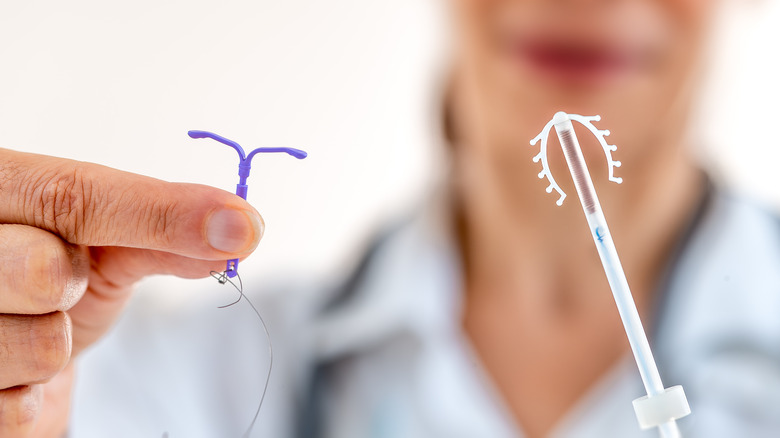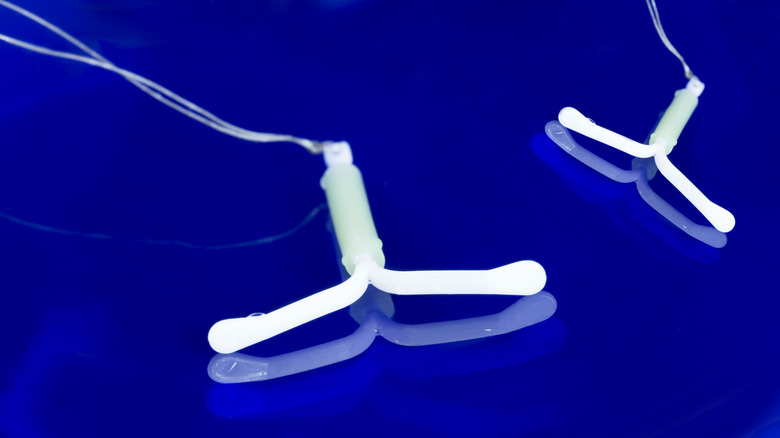What To Expect When Getting Your IUD Removed
An IUD, or intrauterine device, is a small, T-shaped piece of plastic that is inserted into the uterus. IUDs are one of the most effective forms of birth control available, with less than 1% of women getting pregnant while using one (via WebMD). If you have an IUD, it will need to be removed eventually, whether it is because it has expired, it is painful, or you want to try to get pregnant.
An IUD removal should be a quick and relatively painless procedure (via Well + Good). Once you arrive for your removal appointment, your doctor or healthcare provider will use a speculum to open your vagina and locate the strings attached to the IUD. The IUD is then gently pulled out of your uterus through the vagina. You may feel some cramping during the removal, but it should not be too painful. If you have any concerns or questions during the procedure, be sure to ask your doctor or healthcare provider.
If your doctor has any difficulty removing your IUD, they will likely use a pelvic ultrasound to see where the IUD is in your body and then determine how to best remove it. After the IUD is removed, you may experience some bleeding and cramping for a few days. This is normal and should resolve on its own. If you have any heavy bleeding, severe pain, or other concerning symptoms, be sure to contact your doctor right away.
How do IUDs work?
An IUD (intrauterine device) is a small device that's inserted into the uterus by a health care provider (via Healthline). It's not visible from the outside and should not affect your ability to get pregnant in the future. Once inside the uterus, an IUD helps prevent pregnancy for up to 5 years or longer depending on which type of IUD you choose and how long you leave it in.
IUDs work by preventing sperm from fertilizing an egg. They also make the lining of the uterus less favorable for implantation. And in some cases, they can prevent the release of an egg from the ovary (ovulation). Non-hormonal IUDs are made with a copper lining. Copper is a natural spermicide that kills or disables sperm. The copper wire around the base of the IUD prevents pregnancy by releasing small amounts of copper into the uterus. This creates a hostile environment for sperm, making it impossible for them to fertilize an egg. This IUD can stay in place for up to 10 years and is over 99% effective at preventing pregnancy.
Hormonal IUDs release a small amount of the hormone progestin into the uterus. This thickens the cervical mucus, making it difficult for sperm to swim through and fertilize an egg. The hormone also thins the lining of the uterus, making it less likely for an egg to implant there. Hormonal IUDs are over 99% effective at preventing pregnancy.


